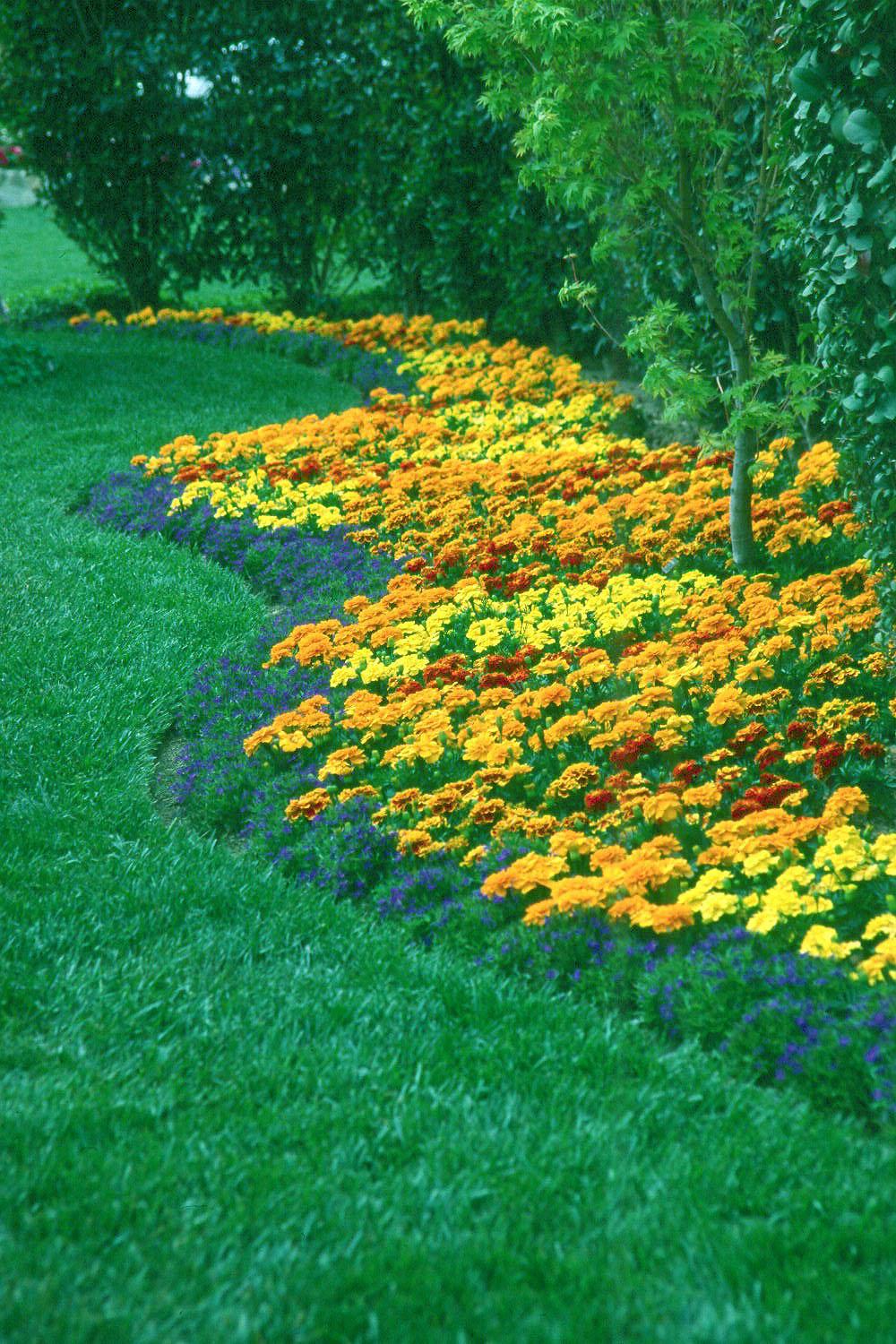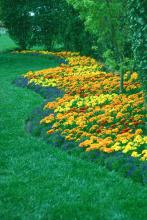Information Possibly Outdated
The information presented on this page was originally released on May 20, 2002. It may not be outdated, but please search our site for more current information. If you plan to quote or reference this information in a publication, please check with the Extension specialist or author before proceeding.
Marigolds offer floral impact in state landscapes
By Norman Winter
MSU Horticulturist
Central Mississippi Research & Extension Center
If there was a poster child, or in this case poster plant, for the most taken-for-granted plants, the recognition would have to fall to the marigold. Incredibly, we can plant marigolds from spring until fall. If mass planted, they will give some of the showiest color in the landscape.
You may hear terms like French Marigolds (Tagetes patula) and African Marigolds (Tagetes erecta), and there are hundreds of varieties associated with each. There are numerous hybrids of the two, adding real confusion. You may find the name American associated with the African hybrids.
There is one thing somewhat funny. The French Marigolds are from Mexico and Guatemala; the African Marigolds are from Mexico and Central America; and neither of those groups are Mexican Marigolds, which are of the genus Tagetes lucida and actually are from Mexico.
The French and the African Marigolds have the ability to really put on a show. While we may have paid more attention in recent years to the very large-flowered African selections like Inca, Marvel, Antigua and Perfection, there has to be something said for the power of the smaller French-flowered selections.
In the French Marigold group, you will find what is known as French Dwarf Crested types like Aspen, Bonanza and the Janie series. Then there is the French Dwarf Anemone series such as Durango and Troubadour. Lastly, there are the French Fully Double types, such as the Aurora series. No matter which you choose, the colors are rich and vibrant.
In fall trials at the Truck Crops Branch Experiment Station near Crystal Springs, some of the best performers were Bounty Spry, Bounty Gold, Janie Flame, Safari Bolero, Aurora Red and Aurora Orange. To be perfectly honest, they all put on a show you would have been proud to have in your garden -- spring, summer or fall.
Fertile, well-drained soil and full sun are all that you need to make you look like the world's garden guru. Well, there might be a couple of other things. First, plant enough to make a real show. One jumbo six pack isn't enough.
The next thing to remember is the color blue or violet. These are the best complementary colors. If you are growing those in the orange to red color scheme, then blue is the best choice as a companion plant. If you are growing those in the yellow range, then violet to purple colors may be the best, such as Purple Wave petunia. Don't forget that the oranges and yellows also work well together. This is called an analogous color scheme.
Marigolds are also great for containers. Try using New Wonder scaevola as a great cascading plant and maybe dwarf fountain grass as a taller plant.
To keep that flower production at full speed, feed with light applications of a 12-6-6 or balanced fertilizer about every six weeks. Deadheading the old flowers will keep them looking tidy and the flower production higher.
If you find the budget really tight this year, don't forget that marigolds are easy to direct seed. I prefer to buy healthy, grown transplants from the garden center, but I keep a few seeds around in case I want a fresh mid- to late-summer crop.
Don't take marigolds for granted. Consider trying them this year and look at the new varieties, too.



